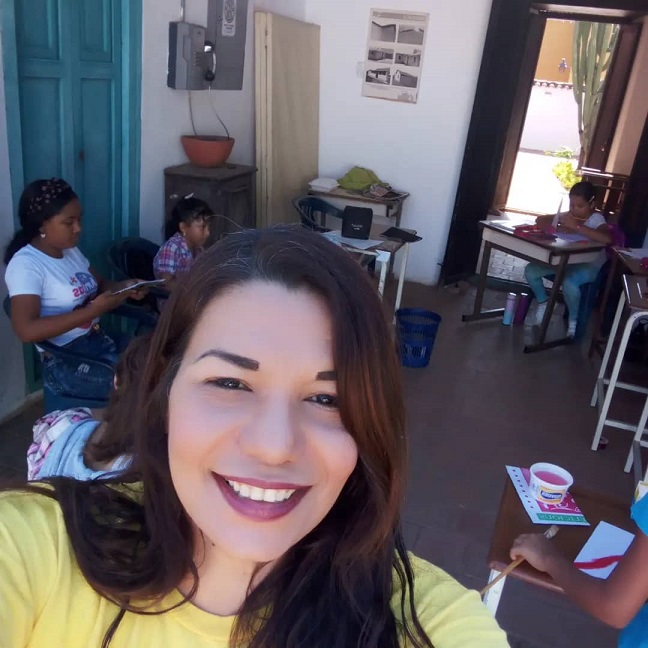
Source: @emimoron
The first step in the development of creative writing is to explain how a story is constructed, what are its essential elements and how to create a thematic thread of what we are telling. In this first step we explain to the children how to give life to their characters, those that they can create as they wish, with the characteristics they want, where we include shapes and colors that may or may not be real for others but that live in our minds.
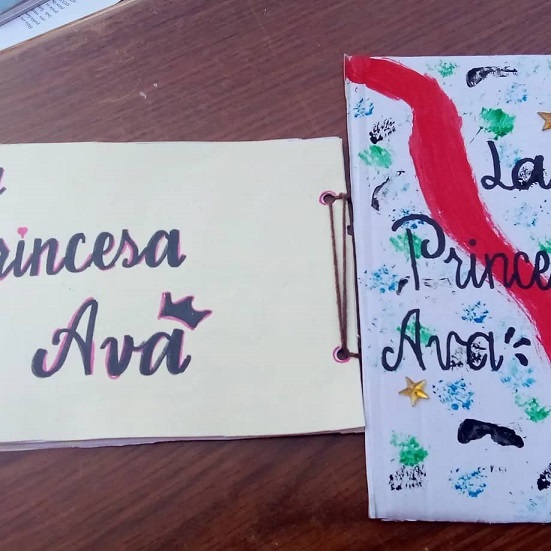
Source: @emimoron
Next, the environment, where our story will develop, what will be the spaces we will create for our characters, as with the characters, we invite you to create, dream and imagine, to break with the everyday to create spaces with our imagination. Finally, the story, the theme, what we want to tell, here we teach the children a little of each of the literary genres from romance, comedy, drama, horror, tragicomedy and everything they can use and combine in their stories. Always remembering that they are the ones who choose what and how to tell it.
To work with the children I did not make distinctions in terms of age or group division, there were a total of 10 children, and they all worked together, throughout the explanations I stopped a little to explain some concepts that were difficult for them, but in general terms my strategy of working together gave me excellent results because the older ones helped the younger ones and these in turn motivated us to create fantastic worlds.
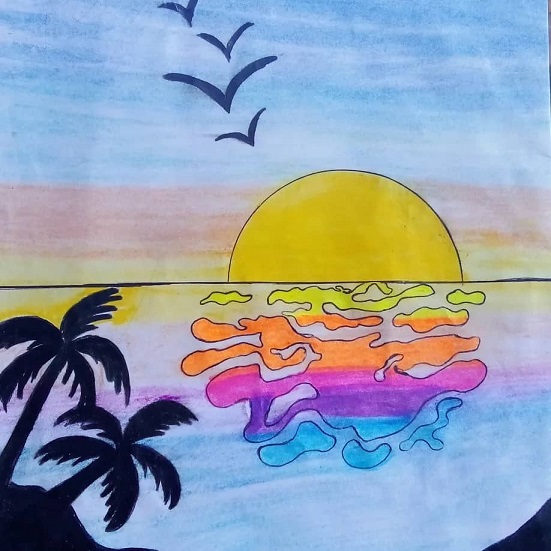
Source: @emimoron
I allowed each one to write on the sheets they wanted, recycled, colored, lined, bond paper or cardboard, as long as they felt comfortable and motivated, the drawings were also present in the stories, the more magical and different were the characters, environments and the story, the more drawings appeared in the children's stories. When the time came to make the book, I asked them to bring recycling material, as well as colors, paints, details, frosting and appliqués, everything they had at hand at home. The idea was, among other things, to teach them the usefulness of what we sometimes think of as garbage and that in reality still has a lot of life in it.
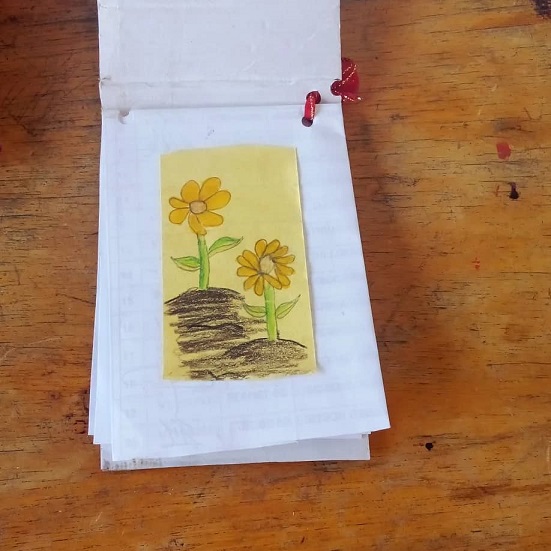
Source: @emimoron
As with the stories, the books we made were of different sizes, shapes and colors, each one with a particular touch that had to do with the author's personality. For the front and back covers we worked with cardboard and cardboard, some used the collage technique to give life to their books and others used paints and colors. The binding was done in a simple way, using some knitting thread or sack string and making some holes on the side of the book so that we could assemble the pages with the covers and these would be attached with the cords.
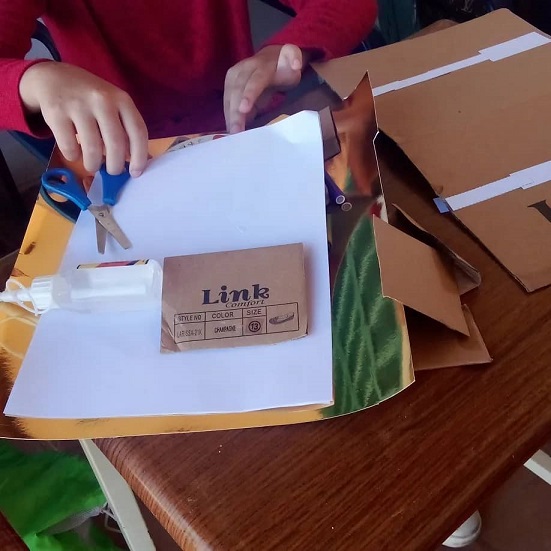
Source: @emimoron
Creative writing has a wonderful effect on children, it changes their perspective completely. In this week of creative work the parents were amazed that the children came home and did not want to play with their tablets, cell phones or watch TV, they wanted to continue writing, drawing and working with their imagination and their skills, something they were grateful for because after the pandemic it was very difficult to make children do manual work and with this course I demonstrated that it is only necessary to let children work with their imagination and capture what they feel and think. Thanks for reading and if you liked the experience, can you tell me if you have ever tried to let your little ones be creative through writing?
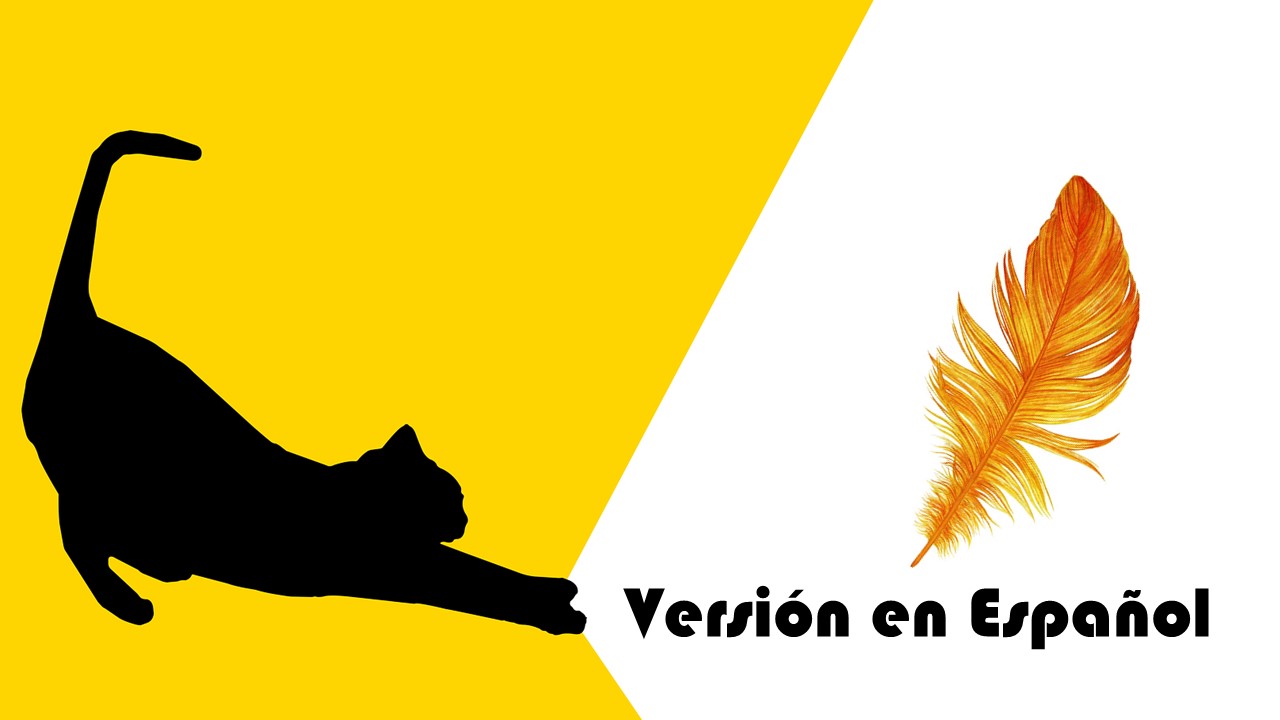
Escritura creativa y elaboración de libros artesanales.
Hola a todos mis amigos de Home Edder ha pasado un tiempo desde la última vez que estuve en estos maravillosos espacios. Sin embargo, siempre recordando con cariño y valoración cada uno de los aportes y aprendizaje de ustedes para con mi vida y mi labor profesional.Hoy deseo compartir con ustedes un poco de lo que estuve haciendo con los niños y niñas de 7 a 10 años de edad y fue un curso de escritura creativa y elaboración de libros artesanales. La escritura creativa fomenta el pensamiento y la imaginación, ayuda con la redacción y fortalece el aprendizaje de las normas y reglas de la ortografía, además de ser un aliado importantísimo en el equilibrio emocional de los niños y niñas debido a que, a través de la escritura creativa se fomenta la expresión de los sentimientos, ya sea esos que nos hacen sentir bien o de los que nos incomodan y en mucho casos sirve de catalizador para las situaciones problemáticas disminuyendo los problemas de estrés y ansiedad.
El primer paso para el desarrollo de la escritura creativa es explicar cómo se construye un relato o historia, cuáles son sus elementos esenciales y como crear un hilo temático de lo que vamos contando. En este primer paso explicamos a los niños como darles vida a sus personajes, esos que ellos pueden crear a su gusto, con las características que deseen, donde incluimos formas y colores que pueden o no ser reales para los otros pero que viven en nuestra mente.
Seguidamente, el ambiente, donde se va a desarrollar nuestra historia, cuáles serán los espacios que crearemos para nuestros personajes, al igual que con los personajes, invitamos a crear, soñar e imaginar, a romper con lo cotidiano para crear espacios con nuestra imaginación. Finalmente, la historia, el tema, eso que deseamos contar, aquí le enseñamos a los niños un poco de cada uno de los géneros literarios desde el romance, la comedia, el drama, el terror, la tragicomedia y todo lo que ellos pueden usar y combinar en sus historias. Recordando siempre que son ellos quienes eligen qué y cómo contarlo.
Para trabajar con los niños no hice distinciones en cuanto a la edad o división por grupos, fueron en total 10 niños, y todos trabajaron juntos, a lo largo de las explicaciones me detenía un poco en explicar algunos conceptos que para ellos resultaran difíciles, pero en líneas generales mi estrategia de trabajar juntos me dio excelentes resultados pues los más grandes ayudaban a los más pequeños y estos a su vez nos motivaban a crear mundos fantásticos.
Le permití que cada uno escribiera en las hojas que ellos quisieran, de reciclaje, de colores, de líneas, de papel bond o cartulina, siempre y cuando ellos se sintieran cómodos y motivados, los dibujos también se hicieron presentes en los relatos, mientras más mágicos y diferentes eran los personajes, ambientes y la historia aún muchos más dibujos aparecían en los cuentos de los niños. Llegado el momento de hacer el libro, les solicité que llevaran material de reciclaje, así como colores, pinturas, detalles, escarcha y apliques, todo lo que ellos tuvieran a la mano en casa. La idea fue, entre otras cosas enseñarles la utilidad de eso que a veces pensamos es basura y que en realidad aún tiene mucha vida.
Así como con los relatos, los libros que hicimos fueron de diferentes tamaños, formas y colores, cada uno con un toque particular que tenía que ver con la personalidad del autor. Para la portada y contraportada trabajamos con cartones y cartulinas, algunos emplearon la técnica del collage para dar vida a sus libros y otros usaron pinturas y colores. El encuadernado lo hicimos de una forma sencilla, utilizando un poco de hilo de tejer o cordón de saco y haciendo unos agujeros al costado del libro de manera que pudiéramos armar las hojas con las portadas y estas quedaran sujetas con los cordones.
La escritura creativa tiene en los niños un efecto maravilloso, cambia su perspectiva totalmente. En esta semana de trabajo creativo los padres quedaron maravillados de que los niños llegaban a sus hogares y no querían jugar con sus tabletas, celulares o ver televisión querían seguir escribiendo, dibujando y trabajando con su imaginación y sus habilidades algo que agradecían porque luego de la pandemia hacer que los niños realizaran trabajo manual era muy difícil y con este curso demostré que solo hace falta dejar a los niños trabajar con su imaginación y plasmar eso que sienten y piensan. Gracias por leer y si te gustó la experiencia, puedes comentarme ¿si alguna vez has intentado dejar que tus pequeños sean creativos a través de la escritura?
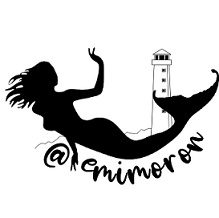
All these handmade books look amazing! I love the concept and actually, my son is into creating stories at the moment but I didnt think to write them as a book, we just write them down in a notebook. I'll keep your idea in mind, sounds really really good. Thanks for sharing!
Hello hello a pleasure to greet you, you know it would be an excellent way to organize your son's comics. And you can help him make a beautiful cover.
Surely! I'll try make one of these with him.
I'm working on this. I know my son prefers to build but I'm trying to get him to understand the value of visualizing through writing and drawing. Do you have any suggestions?
You can as a way of motivation read with him, simple and very colorful story books, another is to play at creating stories, some time ago I published a post about creating stories with the shapes of clouds but you can take advantage of every moment that is fun to create stories.
This is a boy who read all the Harry Potter books in a month. I don't see him doing simple stories.😀
I find this activity very interesting to try writing with the children but also to have them make their own books. At the moment they like to draw a lot and I might take advantage of this ability to support them more.
If you must try and adapt to the age of your children, it is important that you always motivate them to use their imagination.
Parents' contribution towards children's education is immense. Adopted good teaching techniques with many excellent initiatives.
Thank you. What can be done at home is really meaningful for the children's education, they feel more comfortable and confident with this modality of learning at home.
you are most welcome
You are doing amazing job. The children are really doing good. Weldone
Thank you very much, children really love to be able to capture what they have in their minds and do not share with anyone else. This is a strategy for life.
La felicito amiga, es de Gran importancia el mostrar a los niños lo hermoso que es crear por si mismos, el desarrollar su pensamiento y la imaginación.
Muchas gracias, es muy importante fomentar el uso de la imaginación en los pequeños, las tecnologías se han encargado de hacerlos autómatas y a no usar su pensamiento por ello debemos como adultos incentivarlos con actividades donde pueden ver el maravilloso mundo de sus pensamientos.